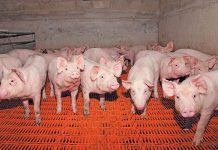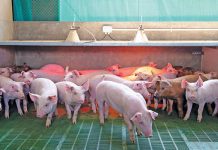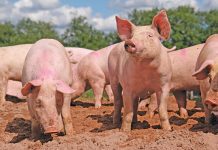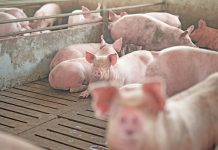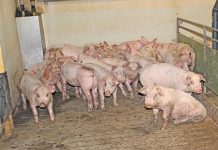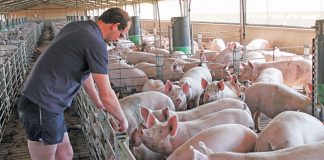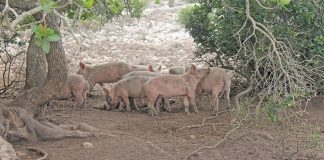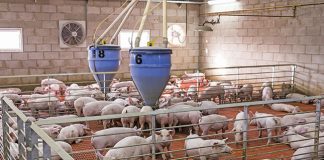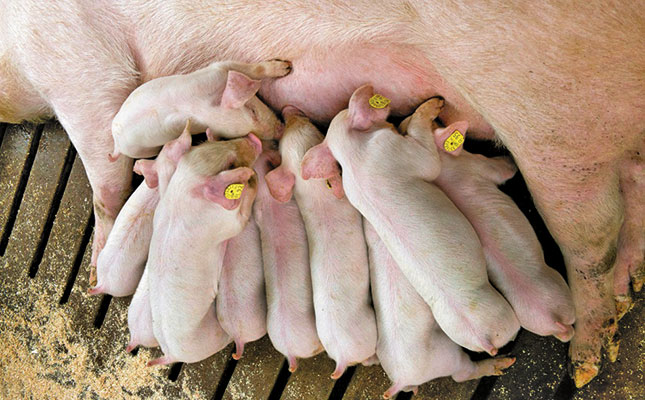
Photo: FW Archive
‘Farrow’ originally meant ‘young pig’. In the early 1400s it came to refer to the birth process in pigs. The sow’s litter is also called a ‘farrow’.
The most critical period in the life of a pig is from birth to weaning. On average, about two pigs per litter are lost during this time. Good management will reduce these losses, and it starts with the sow.
The average gestation period is 114 days (three months, three weeks and three days). In the weeks before farrowing, move the sow to the farrowing pen once a week for a short period, so that she gets used to it; this will reduce stress. Four to five days before farrowing, wash and disinfect her, then place her in the farrowing pen.
Check the udder for hard spots or lumps. The latter can be treated with an antibiotic.
Constipation often occurs at this stage, but can be prevented by feeding the sow green feed, such as lucerne, or high-fibre feed (bran or pollard).
Preparing the pen
- The farrowing pen should be erected some distance from the other pens, and strict hygiene maintained at all times.
- After the previous sow and her litter have been removed, clean the pen using a high-pressure spray, scrubbing brush, and good disinfectant, such as a 4% formalin solution. Leave the pen unoccupied for two to three days.
- Remove soiled and wet bedding daily and replace it with dry bedding.
Farrowing
It’s crucial to supervise farrowing. Newborn piglets have three basic requirements: a suitable environment; adequate and regular nutrition; and absence of disease and crushing.
Watch out for constipation in the sow and make sure she has discharged her afterbirth.
Check her temperature for fever to make sure she is not suffering from infection.
If she has insufficient milk, her litter may die of hunger. Agalactia (giving too little milk) and mastitis require immediate veterinary treatment.
After farrowing
- Cut the umbilical cord a few days after the piglets’ birth using a disinfected pair of scissors. Leave a 2cm section.
- Disinfect the sow’s navel with an iodine solution to prevent bacterial infection.
- Piglets are born with low iron reserves and receive only a limited supply from the sow’s milk. If they are reared outside, they absorb iron from the soil or mud, which will provide their iron needs. If they are reared on a concrete floor, they can suffer from iron deficiency; this can cause anaemia, which results in poor appetite and slow growth. Administer iron supplements three to seven days after birth via an injection in the neck.
- Piglets have sharp teeth. To prevent them from injuring each other or the sow’s teats, clip their teeth with a tusk clipper. Take care while doing so to avoid hurting the gums. Leave about half of the tooth in place.
- Docking a piglet’s tail will reduce tail biting and infection when the animal is older. Leave an 80mm stub. Tails and teeth should be clipped before the piglets reach three days of age. Finally, earmark each piglet for identification purposes.
Source: Majane, P. 2005. ‘Care of sow and piglets’. Department of Agriculture, Forestry and Fisheries in co-operation with ARC-Animal Nutrition and Animal Products Institute.

